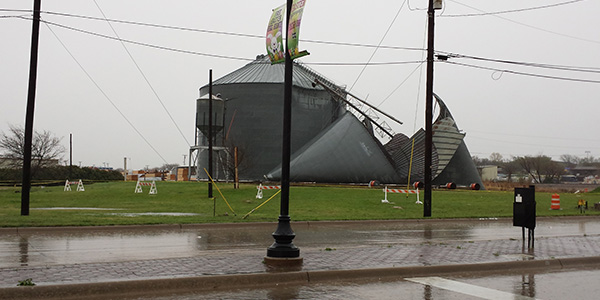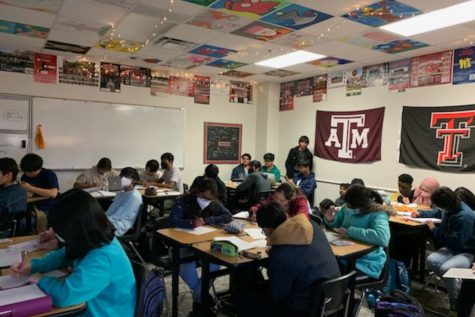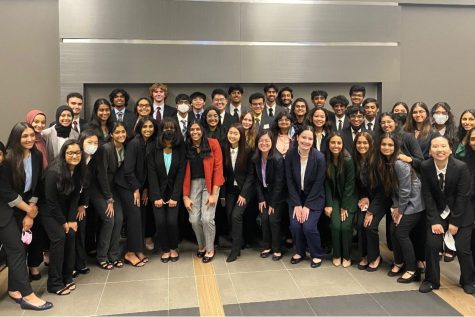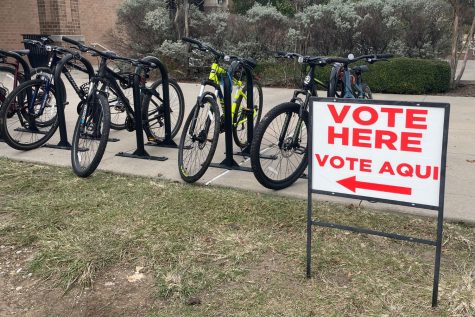Whatever the cause, spring equals inconsistent weather
Whether it’s traditional weather patterns or climate change, the school has procedures in place for severe weather

From overnight storms to blue skies with a sprinkling of clouds, the weather in Texas can change dramatically in a matter of hours.
From sunny and warm to stormy and cool, spring in Texas is a series of changing weather patterns. The recent outbreak of severe weather across the Plains is nothing new, but for some people the inconsistent weather raises the debate climate change.
“The tornados and hail are weather events. Those are daily and weekly atmospheric conditions,” AP Environmental Science teacher Bryan Beck said. “This spring, they have been influenced by the El Nino conditions that we had over the Pacific Ocean this past winter. The surface waters in the Pacific get warmer, and more water evaporates, which results in a more energetic atmosphere over the western U.S. That has influenced our weather this spring.”

If there’s someone here on our campus, we’re going to make sure that they’re safe.
— assistant principal Phil Brown
May is traditionally a time when severe weather can hit Texas, but the pattern of sunny skies followed by rain or severe weather does not necessary mean a permanent change is climate.
“I think people are now looking for links to climate change, and so they are more focused on seeing weather changes,” Beck said. “As our climate gets warmer, we could expect to see more storms and extreme weather events in certain areas of the world. But we must be careful to look at long term trends to discuss climate and differentiate that from what Pete Delkus tells us is going to happen next week. He predicts the weather.”
Regardless of the cause , when the threat of severe weather is imminent, the school district will do what it can to postpone or delay school activities, but sometimes there’s not enough time for that to happen.
“We had a couple times where we had severe weather in the area and it was during dismissal and we had to pull parents inside as well as students and find places to house them as well,” assistant principal Phil Brown said. “So it’s never an ideal situation but if there’s someone here on our campus, we’re going to make sure that they’re safe.”
But there is only so much the school or the school district can control with transportation one of the areas where there is only so much that can be done.

One of the metal grain silos near the corner of John Elliott Drive and Main Street collapsed because of high winds in the March 8 morning storms.
“In a situation where there’s a bus, the bus drivers know to get to a safe place,” Brown said. “If they’re on a route, they’ll try to find the safest place they can. Again, there’s no ideal situation. If students are close to their home or we try to get them there-if they’re walking then again we say if students are in a place where they can get somewhere inside, get there as soon as possible, if that’s coming back to school, if that’s the closest safest place, we try to accommodate. It’s a hard situation because we’re not always in control of who’s where and what’s happening.”
When the threat of several weather is near, parents are often concerned about their children, but the school may be the best bet for keeping students safe.
“If students are still at school, parents really shouldn’t worry about coming to school to pick their kids up,” Brown said. “We’re going to have our procedures in place. The things that we’re doing are for your safety, not because we’re trying to control you, but being compliant with what we’re doing is always for your safety.”

Megan is a junior who joined Wingspan her freshman year. In her free time, she likes to eat and sleep (not at the same time) and cry at the amount of work...







